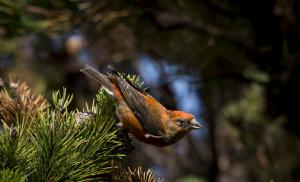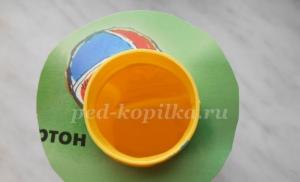Domestic turtle food and aquatic care. Aquarium turtles
Wildlife turtles find food on their own. Their menu includes both animal and plant foods in various proportions, necessarily natural vitamin components, various microelements.
A reptile living in captivity can only be provided with a full-fledged diet.The diet of pets should include multivitamins and minerals, which are essential for their full life. Immediately after purchase, it is advisable to feed the turtle with the same food that the seller had previously fed it, gradually introducing new components. The optimal feeding time is during the day, when the pet is most active. Before feeding, the animal must warm up enough so that it has an appetite. Therefore, it is best to feed your pet 1.5-2 hours after turning on the heater. When the turtles are hungry, they begin to restlessly move around the terrarium or along the bottom of the reservoir.
To understand which food is right for your pet, you need to determine its type. Turtles are divided into 3 main subgroups, depending on the type of food:
- Predatory. They often eat meat, only 10% of their menu consists of food of plant origin. This subgroup includes almost all aquatic breeds - Trionix, red-eared - young, marsh - young. Their menu is based on seafood, low-fat fish.
- Herbivores. They eat plants, vegetables, fruits, only occasionally tasting meat products. This includes terrestrial species - Central Asian breed, Mediterranean.
- Omnivores. Meat and vegetable crops are consumed in approximately equal proportions. Terrestrial turtles of certain breeds, red-eared, marsh, and red-footed turtles adjoin the last subgroup.

Feeding principles for aquatic turtles
Basic set of products:
- River, sea low-fat fish (pollock, hake, cod, navaga, perch);
- Liver (beef, chicken, fish) - about once a week.
For adult animals, large fish should be cut into pieces, the ridge should be crushed, chopped, small fish should be fed whole. For young individuals, the fish must be cut into small pieces along with the bones, after removing the ribs.
Addition to the main menu:
- Various raw seafood (shrimp with shells, squid, octopus - only tentacles, mussels, oysters);
- Meat (crabs, frogs, forage hairless mice, rats);
- Snails (helix aspera terrestrial, large pond snails, ampullaria, coils) - feed small ones whole, large ones - without shell;
- Some insects, other living microorganisms (bugs, forage cockroaches, earthworms and mealworms, hairless caterpillars, daphnia, filly, bloodworms, gammarus, tubifex, woodlice);
- Some plant components (aquatic plants, fruits, vegetables, some types of cabbage);
- Special industrial feed for certain types of freshwater turtles (loose, granular, in the form of tablets, sticks, flakes, capsules).

Vegetable components should not prevail over meat foods. For aquatic reptiles, plants are only one of the sources of vitamins, useful microelements. During cold seasons, it is recommended to introduce specialized vitamin complexes for aquatic and sea turtles.
Under no circumstances should predator turtles be fed with beef, pork, lamb meat, their derivatives - sausage, minced meat, pâté and others. In addition to these prohibitions, you cannot feed reptiles with cheeses, dairy products, bakery products, feed intended for other animals. Such foods can be detrimental to their well-being and health.
Basic set of products:
- Fresh greens - plants that are not toxic to turtles (salads, cabbage, dandelion leaves, various flowers, grass) - about 80% of the menu;
- Vegetable crops (zucchini, cucumbers, carrots, tomatoes) - about 15% of the menu;
- Fruits (bananas, apples, pears) - the remaining 5%.
Addition to the main menu:
- Champignons and other easily digestible mushrooms;
- Vegetable crops (a small amount of sorrel, plantain, coltsfoot, lawn grass, thistle - leaves, clover, peas, timothy, sprouted oats, veronica);
- Fruit (from citrus - orange, tangerine, mango, plum, apricot, peach, melon);
- Vegetables (bell peppers, beets, onion feathers, carrot tops, squash, pumpkin, artichoke, horseradish - a small amount, legumes)
- Berries (watermelon, strawberries, strawberries, raspberries, edible forest berries);
- Bran, sunflower seeds (not fried), dry yeast, dry seaweed;
- Special dry food for terrestrial breeds (Wardley, Tetra, Sera);
- Hard-boiled chicken egg - once a week;
- Snails, slugs, insects - once a month.

Periodically add calcium supplements to your pet's menu, and during the cold season - special multivitamins.
Note! All plant foods should be fed exclusively raw. Do not use heat treatment.
Never overfeed your pets, but do not limit the list of foods to 1-2 ingredients. The food must be balanced, it is imperative to include all the necessary vitamins, otherwise there is a high risk of dangerous diseases, growth disorders, developmental disorders, obesity or exhaustion, and the death of the animal.
Many breeders have a question whether it is necessary to water the turtle with water?
Land bugs are not adapted to receive water. Usually, when trying to water reptiles, liquid flows out of their mouths. If dry food predominates in the food of pets, animals may feel thirst more often than their relatives, who eat mainly vegetables and fruits.
Experienced owners advise using two methods to prevent dehydration:
- It is necessary to introduce juicy plant products into the pet's menu as often as possible.
- Another way to give water to an animal is to bathe it. The optimal bathing time for land turtles is 30-50 minutes. The water should not reach the level of the nostrils. With proper bathing, the reptile's body is saturated with moisture enough.
It should be borne in mind that in the markets, as well as on the territory of pet stores, turtles usually experience dehydration, so after buying, it is recommended that you bathe your new pet first so that it receives the required amount of water.
The main menu of omnivorous reptiles includes food of plant and animal origin in equal proportions.
It is important to select the menu depending on the reptile subspecies. For example, animal food, consisting of terrestrial inhabitants (forage mice, rats, frogs, insects, snails, slugs) is suitable for land, and a fish menu, seafood for water.
The situation is the same with food of plant origin. Terrestrial breeds should feed on terrestrial plants, vegetables, some fruits, while aquatic plants are more suitable for algae and other aquatic plants.

Distinctive nutritional features of small and adults
For small and adult reptiles, there are some differences in feeding. Young turtles grow very quickly, so you need to feed them daily, while adults only need to eat 2-3 times a week, eating all the food to the end.
The diet of young animals should be as varied as possible, it is imperative to include vitamin D, which prevents the development of rickets, calcium, which is necessary for the proper growth of the shell, multivitamins, and minerals.
There are situations when a pet is forced to do without food and moisture for some time. It also has its own distinctive features regarding the age of the individual. Adults can do without food for up to two weeks without experiencing any discomfort. Young turtles, including three-day-old babies, go without food for up to a week.
- You need to feed your pets regularly. You cannot starve them for no apparent reason (such as moving, the involuntary absence of the owner, etc.);
- Under no circumstances should you overfeed your turtle. If your pet is full and refused an additional portion, do not insist!
- Pregnant individuals need to be fed at least once a day, similar to young animals. They need to take vitamin D, calcium, multivitamins suitable for their type;
- Do not give a land animal specialized food for aquatic turtles, and vice versa!
- It is not recommended to give food cold, it is necessary to bring it to ambient temperature before feeding the pet;
- Water turtles can be thrown food directly into the aquarium, but be sure to keep track of so that there is no surplus, which will have to change the water.
- Land animals can be taught to eat with tweezers.
- If your pet refuses to eat for more than two weeks, you should immediately show it to your veterinarian.
- If possible, it is advisable to launch aquarium fish (guppies, goldfish, swordtails) into the aquarium to the turtles to maintain the hunting instinct.
- In the absence of algae, it is allowed to feed lettuce or dandelion leaves to aquatic reptiles.
- Young individuals prefer mainly food of animal origin, while older ones are more inclined to plant foods.
- To maintain adequate mineral levels, the turtles are given daily bone meal, which is sold at pet stores. For an adult reptile, the daily dose is 5 g of flour;
- To maintain the shell in a healthy state, it is sprayed with a special spray "Nature's vita-sprey reptile" once every two days;
- Dry food should be selected based on its composition. Poor quality feeds are not recommended due to lack of vitamins. It is not recommended to buy fishmeal feed. You can give dry food to your pet no more than 3 times a day;
- It is preferable to feed vitamins before the main meal when the reptile is feeling hungry;
- Oily vitamins can be dripped onto dry food. After it is saturated with the solution, throw it into the water.
Video
The yellow-bellied or red-eared turtle (Trachemys scripta) is a species belonging to the family of freshwater American turtles. This freshwater reptile is deservedly one of the most common and very popular species among lovers of exotic pets such as turtles.
Characteristics of the red-eared turtle
Experts recommend purchasing a reptile in early spring, which will allow the baby to adapt as easily as possible to new conditions during the summer period. A seasonal feature of reptiles purchased in the fall is a slow adaptation and a slowdown in growth processes, as well as the risk of developing rickets, vitamin deficiency or pneumonia.
When buying a red-eared turtle, you should pay attention to the condition of the reptile's shell. It must be undeformed and not soft, of regular shape, free of scratches or any other damage. There should be no cracks or spots on the reptile's skin. Sick and dehydrated animals have sunken eyes surrounded by a small "notch". The eyes of the red-eared turtle should be free of discharge and puffiness. The turtle's mouth should not have a whitish coating, abrasions or wounds.
It is interesting! A strange-looking formation located on the plastron is most often the remnant of the yolk sac - a food source for a small turtle. Such a formation dissolves on its own, after which the reptile begins to actively feed.
It is important to be able to independently determine the sex of a red-eared turtle, and also to remember that very small turtles, regardless of gender, look exactly the same. It is only as they mature that the differences between females and males are evident. The latter become sexually mature more quickly, having a shell about 10-12 cm in size by this age, but the females of this species are noticeably larger. Among other things, males have longer claws, which are located on the front pair of legs, as well as concave plastrons and a longer, thicker tail. The cloaca in the male is located closer to the middle part of the tail.
Aquarium device, filling
Proper turtle diet
In captivity, the red-eared turtle should be fed with lean, preferably river fish, and once every two weeks the freshwater reptile is given raw beef liver. The diet of an exotic pet must be supplemented with snails, as well as crickets, forage cockroaches, earthworms and small aquarium fish. The plant part of the diet can be represented by various aquarium plants, lettuce, dandelion and plantain leaves.

It is interesting! When placing food in an aqua terrarium, remember that red-eared turtles do not chew food until they completely submerge their head under the water, which is due to the lack of saliva secretion.
The aquarium water should contain calcium in the form of Vitakraft Seria mineral stone. Many owners of red-eared turtles feed their pets with special ready-made diets: Tetra RertoMin, Sera and JBL. Of vegetable crops, preference should be given to carrots, which, in crushed form, are given to freshwater reptiles no more than once a month. Turtles under one year old should be fed daily, while older ones should receive food once every two or three days.
Caring for a red-eared turtle
Friendly and rather unpretentious red-eared turtles require simple, but specific care... Clean water is the key to the active growth of young animals and the preservation of the health of adult animals. To fill the aqua terrarium, use water that has been allowed to settle for five days. By installing a powerful filter system, the frequency of water changes can be reduced. To maintain optimal temperature performance, you can use a traditional incandescent lamp, the light from which should be directed directly to the land island. In this case, the aquarium water does not require too active additional heating.
Important! It is a misconception that crowded red-eared turtles do not grow and remain attractively small. In such conditions, the reptile can die very quickly.
After a while, the adapted animal learns to take all its food exclusively on land, which makes the feeding process very convenient, and also prevents the risk of water pollution too quickly. It is desirable that the island for resting and feeding the reptile has a textured surface. Experts consider it inappropriate to keep turtles with noticeable differences in size inside one aqua-terrarium.
It should be noted that the sluggishness and sluggishness of the red-eared turtle is often very deceptive, therefore sometimes such domestic exotics are able to show tangible activity not only in water, but also on a land island. It is for this reason that it is very important to choose the right reptile dwelling. The minimum wall height should be approximately 35-45 cm. Too low walls of the aqua terrarium can cause the turtle to jump out and die quickly from severe injury, dehydration or hunger.
Health, disease and prevention
Almost 90% of all diseases of the red-eared turtle occur as a result of improper maintenance or non-compliance with care requirements. The presence of dirty water in the aquarium quickly causes a sharp deterioration in the health of the turtle.

A sick aquatic animal must be kept at a temperature increased by about 2-3 ° C, which helps to improve the functioning of the immune system. It is also necessary to monitor the turtle's drinking regime, since dehydration can cause the death of freshwater against the background of the rapid development of renal failure.
The characteristics of the movements of the swimming red-eared turtle testify to the unhealthy of the animal.... A sick pet most often moves in a position "on its side" or simply sinks to the bottom. If you suspect an infectious nature of the disease, all animal care items should be carefully treated with a pet-safe antiseptic. As a rule, the first symptomatology of a bacterial infection is represented by the appearance of edema and necrotic changes. In this case, an antibiotic treatment regimen is prescribed, and a complete replacement of the water in the aquarium is carried out.
When injured, a red-eared turtle, under the influence of an infection that has entered the body, develops blood poisoning, accompanied by reddening of the paws and very pronounced lethargy. Such a pathology belongs to the category of intractable, therefore, it requires urgent and qualified assistance from specialists. Untimely treatment often becomes the cause of the death of a pet as a result of dysfunction of internal organs.
Preventive measures are presented:
- daily inspection of the turtle;
- regular cleaning of the aqua terrarium;
- regular water changes in the aqua terrarium;
- proper organization of food;
- prevention of hypothermia;
- regularly checking the performance of the illuminators, as well as heating and filtering devices;
- compliance with the rules of personal hygiene when caring for a pet;
- systematic cleansing of the turtle shell from algae;
- mandatory quarantine for sick or newly acquired turtles;
- limiting contact of the sick turtle with any other pets and family members;
- control of the movement of the animal outside the aqua terrarium;
- periodic ultraviolet irradiation and sunbathing;
- regular examination by a veterinarian.
If the diet is improperly compiled, a freshwater animal develops a calcium deficiency, which manifests itself in the form of curvature or severe softening of the shell. Too much calcium deficiency significantly increases the risk of death of the red-eared house turtle. In order to quickly normalize the general condition of the reptile, the veterinarian prescribes calcium preparations in injections.

The ornamental red-eared turtle is one of the most popular domestic freshwater reptiles. In this article, you will learn what equipment is needed to keep turtles, how to care for them, how to feed them, and much more.
Are red-eared turtles decorative?
To answer this question, let's look at what the word "decorative" generally means when applied to pets. The decorative animal does not perform any useful actions, it is turned on only for the purpose of observation and communication. The decorative animal does not guard the house, does not catch mice.
Let's take a rabbit as an example. There is a wild rabbit, there is a domestic rabbit, which is used for food, and there is a decorative rabbit for keeping in an apartment as a pet. The word "decorative" is often associated with dwarfism (as many small breed dogs are called decorative), but this attribute is optional. Thus, to the question of whether it is possible to call a red-eared turtle intended for keeping in an apartment decorative, we will answer in the affirmative.

Are red-eared turtles dwarf?
On the net you can find questions: "How to distinguish a red-eared turtle from a decorative one?", "Are red-eared turtles dwarf?" etc. The fact is that some unscrupulous sellers, they can even be called scammers, sell ordinary red-eared turtles, passing off as dwarf ones and calling them decorative. They give recommendations for care - feed dried hamarus once every 4 days or feed young animals 1-2 times a week.
Indeed, turtles bought from such sellers and living in the recommended conditions do not grow. How long can a red-eared decorative turtle not eat? The animal can starve for up to several weeks, but the owner will think that this is normal, because the seller advised to feed less often! Turtles live in constant hunger, they do not have enough energy to grow, only to maintain a semblance of life. Animals die after a few years from exhaustion.
If you bought a "dwarf decorative" red-eared turtle, which, according to the seller, will never grow up and remain the same small and cute, then you should be deceived. Such turtles do not exist. Now let's talk about what a red-eared turtle is, how to care for it and how to feed it properly.

Description
The decorative red-eared turtle came to us from the northeastern part of Mexico and the southern states of the United States. Thanks to its unpretentiousness, the habitat of red-eared turtles has expanded quite significantly. It can be found today in Europe, Africa, Asia and Australia.
The turtle got its name from two red (sometimes orange or yellow) spots behind the eyes. Turtles grow relatively small - up to 30 cm in diameter, but giants can also be found - up to 60 cm. In the first 2 years of life, the turtle grows intensively - up to 10 cm per year! With age, growth slows down, and the animal's shell adds 1-2 cm per year.
The lower part of the carapace is dark with yellow stripes and edging, while the color of the upper part changes with age and can be in various shades of green - from dark green to olive and even yellow-brown.

Aquaterrarium
Turtles are often recommended as a simple animal for beginners, and they are inexpensive - 100-150 rubles. But is the red-eared one so unpretentious at home will require both labor and material costs, because the purchase of the necessary equipment will have to pay 10-20 thousand rubles.
The decorative red-eared turtle can be kept either singly or in a group. It should be noted that to keep one individual, an aquaterrarium with a volume of at least 110 liters is needed. If you decide to purchase multiple turtles, they should be about the same age and size. In a group consisting of some males, conflicts will constantly arise, so pay attention to the sex of the animals in advance.
The water in the aquarium should be warm, 26-28 ° C. The water level in height must exceed the width of the animal's shell, otherwise the turtle will not be able to roll over. You need to change the water 1-2 times a week, if you buy a filter, then you can do it less often - 1-2 times a month. An aquarium heater is required to maintain the temperature.
The land area in the aquaterrarium should be at least 25% of the total area. The coast of the island should rise at an angle from the very bottom. The land should be located so that even a grown turtle cannot get out into the wild - at least 25 cm from the top edge of the terrarium.

Lighting in the aquaterrarium
The decorative red-eared turtle in nature spends a lot of time on the shore, under the rays of the sun. They are replaced in captivity by a UV lamp. It is installed at a height of about half a meter above the aquaterarium. The first time the lamp is turned on 1-2 times a week for a few minutes, gradually bringing the time to half an hour daily. UV rays are disinfected without a special lamp, the animal begins to get sick.
The terrarium should also be equipped with a conventional incandescent lamp for lighting and heating. The air temperature on the island should not rise above 30 ° C.
Nutrition
How to feed a decorative red-eared turtle? In order for the turtle to actively grow and be healthy, it needs to eat well. At a young age, turtles prefer animal food; with age, they begin to eat more and more plant foods.
Young animals are fed daily, after two years - 2-3 times a week. You can feed both special food purchased at a pet store and natural food. This could be:
- Poultry, beef, horse meat (pork and lamb are not suitable because of their fat content).
- By-products (liver, heart, lungs, stomach, etc.).
- Lean fish (kept in hot water for several minutes) or small live fish, shrimp, squid.
- Snail meat.
- Insects. Not poisonous! Grasshoppers, caterpillars, beetles, bloodworms, koretra, large daphnia.
- Live or dried hamarus.
- Aquatic plants - duckweed, hornwort, ceratopteris, ludwigia.
- Vegetables and herbs - cucumber, lettuce, clover, dandelion.

Self-made food
You can make a combination feed yourself. Its composition can vary in different recommendations, but usually it is something like this:
- Food gelatin (30 g per half glass of water).
- Fish fillet - 150 g.
- Squid fillet - 100 g.
- Milk - 150 ml.
- Raw chicken egg - 2 pcs.
- Carrots - 70 g.
- Apple - 50 g.
- Cabbage - 50 g.
- - 10 tablets.
- Tetravit - 20 drops.
The mixture can be stored in the refrigerator for a week. Before use, the cut piece must be warmed to room temperature. The specified amount is enough for 7-10 days for an adult turtle. Bone meal or crushed eggshells should be given daily as a source of calcium.
If you choose a ready-made industrial, then carefully read its composition. Foods consisting only of dried hamarus or bloodworms will not work.
They feed the turtles in the water. The food remaining 20-30 minutes after the meal should be removed from the terrarium.

The main mistakes of the owners of red-eared turtles
So, a decorative red-eared turtle has appeared in your house. Caring for this animal is not as easy as it seems. Very often, new owners are poorly guided in the peculiarities of keeping the animal. Let's consider their main mistakes.
- "For a small turtle, a small aquarium." This reasoning is fundamentally wrong. The animal should swim freely at any age, and turtles grow very quickly.
- "A water turtle can live in a regular aquarium without sushi" is another mistake. A red-eared turtle will simply drown without an island of sushi!
- "UV lamp is optional." Once again, no, without UV rays, the turtle will suffer from vitamin D deficiency and become ill.
- You cannot feed the turtle the same thing, for example, only meat or only gamarus. The diet should be varied.
- You cannot run water in the aquaterrarium. It must be clean, no mud or film! In dirty water, young animals may refuse food.
- Do not remove peeling plates from the shell; you do not need to clean it with a stiff brush.
- Do not buy at the same time two males or turtles that are significantly different in size, they will fight, conflict. And constant stress will lead to illness.
- Do not hibernate your turtle yourself. At home, while maintaining the recommended temperature, the turtle will not hibernate.
- All accessories for cleaning the aquarium should be separate; it is unacceptable to use sponges with which you clean the room or kitchen.
- Do not keep your turtle in the same tank as your fish unless they are reptile food.
- Keep your turtle on the floor for a walk; it can catch cold quickly.
Despite their widespread distribution, aquatic turtles are among the finicky inhabitants of the aquarium. Turtles- wild reptiles that will never feel "at home" in the aquarium, even with proper care. Therefore, in order to create the most comfortable conditions for pets, it is necessary to carefully follow all the rules for caring for aquatic turtles.
The most common species of aquatic turtles - red-eared... Home aquariums also keep marsh turtles, matamata turtles, caiman turtles, spotted water turtles, lumpy turtles, European water turtles, black-bellied three-keeled turtles, shield-footed turtles, box-shaped, soft-bodied turtles.
Each species may have its own nuances of care, let's talk about the general principles of keeping aquatic turtles in home aquariums.
Aquatic Turtle Aquarium
The size. A sufficiently large aquarium is required for aquatic turtles. In general, the turtle shell should cover a maximum of 25% of the bottom area of the aquarium. It is also best to have an extra feeding container for the turtles to keep the aquarium water clean.
The purity of the water. Completely replace the water in the aquarium periodically. For a turtle with a shell diameter of 10 cm and an aquarium volume of 40 liters, the water should be changed 2-3 times a week. With a volume of 200 liters - once a week. If you install a filter, then the water can be changed less often. From time to time it is necessary to clean the surface of the inner walls of the aquarium with an abrasive sponge.
Temperature, oxygen saturation. It is not necessary to dechlorinate the water, but always use only settled water for your aquarium. Monitor the water temperature in the aquarium carefully. After changing the water, make sure the water is hot enough before releasing the turtle into the water. The water should not only be clean and of the correct temperature (24-28 ° C), but also saturated with oxygen.
Island. Ideally, the aquarium should contain two islands of land. On one, the temperature should be 28-32 ° C so that the turtle can warm up. Use an infrared lamp or an incandescent lamp for this. On the second, the temperature should be 24-25 ° C. The approach to the island should not be entirely of smooth material (plastic glass), otherwise the turtle will not be able to climb out onto it.
To prevent the turtles from getting out of the aquarium, the water level should be 10-18 cm below the edge, depending on the size of the turtle. You can cover the aquarium with a net, but not glass.
What to feed an aquatic turtle
Most diseases of aquatic turtles associated with improper diet, so it must be complete and balanced. Aquatic turtles- carnivores, but this does not mean that their diet should include only meat. Feeding the aquatic turtle depends on the species to which it belongs, it is necessary to take into account individual characteristics: some require the predominance of vegetables and fruits, others vegetation, and still others meat. In addition, the diet depends not only on the species, but also on the individual preferences of each particular turtle.
Basis of feeding: live fish, earthworms, snails, molluscs, bloodworms, carriage, squid, shrimp meat, raw liver, lettuce, carrots, clover, vegetables, fruits, duckweed, spirogyra.
Feeding aquatic turtles in adulthood, it is carried out 2-3 times a week. Young turtles need to be fed every day. The problem of water purification is associated with feeding. To prevent the filter from clogging, do not feed too much or use too fatty feed.
There is a widespread belief that turtles are very easy to care for. Some even consider her to be a pet, for which it is enough to give food and water for a normal life. It's a delusion. Turtles are wild reptiles that take a long time to get used to the home environment, you need to take care of them and create comfortable conditions.
Quite often it can be found in houses and apartments. Some owners allow them to move freely around the living quarters, equip a separate place for food and drink (almost like for cats), even try to train them to the toilet. That is, in this case, the animal is in free mode, but within the boundaries of the apartment, of course.
Is it correct? Most experts believe that this should not be the case.
Moreover, such freedom can be dangerous for the turtle. She can accidentally swallow household rubbish, get stuck in a heating radiator, catch a cold in a draft. There were times when the inhabitants of the apartment accidentally stepped on their armored pet ...
In short, to keep the turtle and take good care of it, you need its own territory.
Turtle terrarium: equipment
 Quality care for domestic reptiles is provided only in the terrarium - a glass box where the turtle walks, feeds, sleeps. The terrarium may not necessarily be glass, but a wooden box, for example. But it is desirable that one side of it is made of transparent material.
Quality care for domestic reptiles is provided only in the terrarium - a glass box where the turtle walks, feeds, sleeps. The terrarium may not necessarily be glass, but a wooden box, for example. But it is desirable that one side of it is made of transparent material.
- a house for sleeping and relaxing (an inverted plastic or clay pot with a hole is fine);
- the feeder must be stable enough so that the animal does not accidentally overturn it (you can read about how to feed a domestic turtle in this one);
- drinker with daily changing water for drinking;
- a heater to create a comfortable temperature in that part of the terrarium where the feeder and drinker are located (not lower than +26 degrees);
- luminaire with an ultraviolet lamp to simulate sunlight;
- thermometer for temperature control.
At the bottom of the terrarium, they usually arrange soil or bedding, which is often used as hay. In summer it is, of course, possible and very convenient: it can be changed frequently. But in winter, in urban conditions, it is problematic to find hay.
You can put sand, but there were times when turtles swallowed it. However, many owners of these reptiles cover the bottom of the terrariums with sand, and lay large flat pebbles on top. Many turtles like to bury themselves in the sand, but pebbles are necessary for a very specific action: animals like to sharpen their long claws on stones.
About turtle hygiene
 Proper care of a pet is impossible without maintaining a clean environment and personal hygiene of the animal.
Proper care of a pet is impossible without maintaining a clean environment and personal hygiene of the animal.
Rooms should always be kept clean and tidy. Owners often let their turtles go for walks, so you need to ensure that they do not swallow household rubbish, as well as foreign objects lying on the floor.
The bottom of the cage should be cleaned of excrement every day; it is recommended to rinse the feeder and drinker as often as possible. The water in the drinker should be changed every day, as fresh aqua is recommended for turtles.
All turtles are very fond of water treatments. Bathing is usually carried out once a week, but many experts advise washing armored pets as they become dirty. Warm water for hygienic bathing (with a temperature of at least +30 degrees) is poured into a separate container at the level of 2/3 of the turtle's growth, so that the head is above the water surface.
How to bathe?
The shell, tummy, paws and muzzle are gently washed with a sponge or hand, trying not to hurt the eyes. Places of heavy contamination can be washed with baby soap. While swimming, you can see that the turtles really like it: they calmly allow themselves to be doused with water. Therefore, such a pleasant procedure for them can be carried out longer - up to 30 minutes.
After taking a hygienic bath, the pet should be wiped dry with a towel and released into the terrarium.
If you have little curious baby turtles in your house, you can bathe them more often - three times a week.
Claw trimming
Although reptiles at home try to sharpen their claws on their own, care must be taken that they do not grow too long.
Therefore, clipping of the nails should be regular. This is not difficult at all with the help of sharp scissors and with the use of a special nail clipper.
With this procedure, you need to be careful: only the white edges of the claws can be cut, the dark areas have blood vessels.
About the benefits of walking
 On a warm, dry summer day at a temperature not lower than +25 degrees, it is recommended to arrange a walk in the yard.
On a warm, dry summer day at a temperature not lower than +25 degrees, it is recommended to arrange a walk in the yard.
You can take your turtle out to a green lawn or grassy lawn and release it for a walk in the fresh air.
The place you need to choose is quiet and clean. With a high level of external noise, the animal can get scared and hide under its shell. Don't make the turtle nervous.
Plants at the place of walking should be edible - dandelion, clover, plantain.
If the turtle is sick ...
As a rule, diseases arise from improper care.
Injuries. The turtle can fall from a high place and be fractured. In this case, you need to apply a splint or plaster cast and be patient, as the process of bone healing can take a long time.
Shell necrosis possible as a result of any mechanical damage. This is a rather serious disease, which is very difficult to treat by constant treatment of the affected area with disinfectant solutions.
Cold... Your pet may catch a cold while walking. The appearance of a very severe runny nose, shortness of breath is possible. In such cases, veterinarians prescribe antibiotics, and for the general strengthening of the body - a vitamin complex.
Upset stomach a. Improper diet can cause diarrhea. It can be infectious or appear due to improper nutrition (spoiled food, for example). In any case, you need to pass feces for analysis and start appropriate treatment after determining the cause of the disease.
If there is even the slightest suspicion of the onset of the disease, you should contact your veterinarian as soon as possible.
Caring for a turtle at home has a number of features, but in general it is not that difficult. You can even entrust this activity to children, but with periodic supervision by adults, of course. It is very interesting to observe the behavior of these leisurely animals. That is why the first acquaintance of children with pets very often begins with turtles.
A short video about keeping turtles at home:













